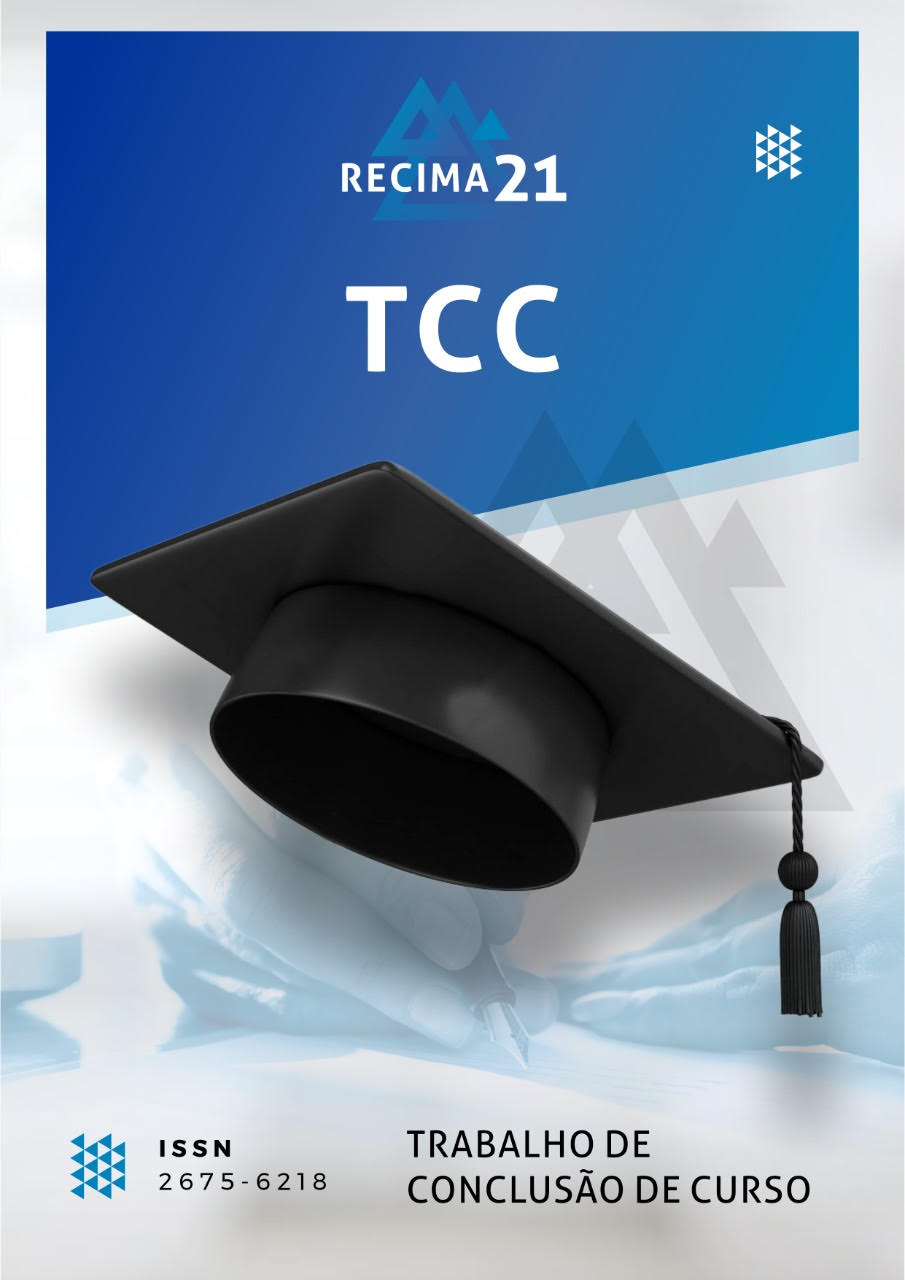APPLICATION OF TRICYCLIC ANTIDEPRESSANTS IN MIGRAINE: A LITERATURE REVIEW
DOI:
https://doi.org/10.47820/recima21.v3i1.1568Keywords:
Tricyclic Antidepressants; Effects; Efficiency; Migraine; Treatment.Abstract
INTRODUCTION: Migraine, or migraine, is characterized as an intense, pulsating headache of vasomotor origin (CHARLES, 2018). It is one of the types of primary headache, having multifactorial causes, which can become a chronic condition, which will significantly influence the quality of life of approximately 15% of the world's population (CALUMBY, 2015). OBJECTIVE: The main objective of this study was to analyze research articles and literature reviews focused on the effects of tricyclic antidepressants on migraine. METHODOLOGY: The bibliography that will be used in this scientific production is based on research articles and systematic literature review, which will be searched using electronic databases, namely Lilacs, PubMed, Scielo and Medline. FINAL CONSIDERATIONS: it is concluded that tricyclic antidepressants are more effective in preventing migraine than selective serotonin reuptake inhibitors, although with greater adverse effects, in addition to increasing their effectiveness over time.
Downloads
References
AZIMOVA J, SKOROBOGATYKH K, SERGEEV A, et al. Migraine and depression: a comparative assessment of the efficacy and safety of antidepressants in patients with migraine. J Neurol Stroke. 2018; 8(4) : 208‒212. DOI: 10.15406/jnsk.2018.08.00311;
BECKER, W. J. (2017). The Diagnosis and Management of Chronic Migraine in Primary Care. Headache: The Journal of Head and Face Pain, 57(9), 1471–1481. doi:10.1111/head.13089;
BERTOLUCCI, P. H. F. Neurologia: diagnóstico e tratamento. 2ª Ed. Barueri, SP: Manole, 2016
BROOME ME. Integrative literature reviews for the development of concepts. In: RODGERS, B.L.; KNAFL, K.A., editors. Concept development in nursing: foundations, techniques and applications. Philadelphia: W.B Saunders Company; 2020. p.231-50.
BURCH, R. Antidepressants for Preventive Treatment of Migraine. Curr Treat Options Neurol 21, 18 (2019). https://doi.org/10.1007/s11940-019-0557-2;
CHARLES, A. (2018). The pathophysiology of migraine: implications for clinical management. The Lancet Neurology, 17(2), 174–182. doi:10.1016/s1474-4422(17)30435-0;
DHARMSHAKTU, P., TAYAL, V., & KALRA, B. S. Efficacy of Antidepressants as Analgesics: A Review. The Journal of Clinical Pharmacology, 52(1), 6–17, 2012;
FIGUEIREDO, R.; PAIVA, C.; COSTA, E.; BITTENCOURT, M. Enxaqueca. Fundação Oswaldo Cruz. Canal Saúde Fiocruz, 2015;
HA, H. et al. Migraine Headache Prophylaxis. American Family Physician. Volume 99, Number 1 January 1, 2019;
INTERNATIONAL ASSOCIATION FOR THE STUDY OF PAIN. Epidemiology of Headache. Global Year Against Headache. Oct 2011 - Oct 2012;
KATSARAVA, Z. et al. Defining the Differences Between Episodic Migraine and Chronic Migraine. Curr Pain Headache Rep (2012) 16:86–92. DOI 10.1007/s11916-011-0233-z;
KATZUNG, B. G. Farmacologia básica e clínica. 12ª edição. Porto Alegre: AMGH, 2014;
KOWACS, F.; MACEDO, D. D. P.; NÉTO, R. P. S. Classificação Internacional das Cefaleias 3ª Edição. Comitê de Classificação das Cefaleias da Sociedade Internacional de Cefaleia. São Paulo, 2019;
KRYMCHANTOWSKI, A. V., & JEVOUX, C. DA C. The Pharmacological Treatment of Migraine in Brazil. Headache: The Journal of Head and Face Pain, 55, 51–58, 2015;
MARQUES, C. M. P. Enxaqueca: da teoria à prática. FFUC – Teses de Mestrado. Coimbra, Jul – 2016.
MAY, A., & SCHULTE, L. H. (2016). Chronic migraine: risk factors, mechanisms and treatment. Nature Reviews Neurology, 12(8), 455–464. doi:10.1038/nrneurol.2016.93;
MEDAWAR, C. V.; MATHEUS, M. E. Antidepressivos Tricíclicos e Gabapentinoides: uma análise do perfil farmacológico no tratamento da dor neuropática. Rev. Bras. Farm. 93(3): 290-297, 2012;
MORACZEWSKI J, AEDMA KK. Tricyclic Antidepressants. [Updated 2020 Dec 7]. In: StatPearls [Internet]. Treasure Island (FL): StatPearls Publishing; 2021 Jan-. Available from: https://www.ncbi.nlm.nih.gov/books/NBK557791/;
MORAIS MSBBF, BENSEÑOR IM. Cefaléias primárias. Rev Bras Med 2019;66(6):138-47.
PIETROBON, D., & MOSKOWITZ, M. A. (2013). Pathophysiology of Migraine. Annual Review of Physiology, 75(1), 365–391. doi:10.1146/annurev-physiol-030212-183717.
PORTO, C. C. Semiologia médica. 7ª Ed. Rio de Janeiro: Guanabara Koogan, 2014;
SCHWEDT, T. J. Chronic migraine. BMJ, 348 (mar24 5), g1416–g1416. 2014;
SILBERSTEIN, S. D. Preventive Migraine Treatment. CONTINUUM: Lifelong Learning in Neurology, 21, 973–989, 2015;
STAHL, S. M. Psicofarmacologia: bases neurocientíficas e aplicações práticas. 4ª edição. Rio de Janeiro: Guanabara Koogan, 2014;
STEINER, T. J., STOVNER, L. J., & BIRBECK, G. L. Migraine: The Seventh Disabler. Headache: The Journal of Head and Face Pain, 53(2), 227–229. 2013;
TORTA, R., & IERACI, V. Migraine and depression comorbidity: antidepressant options. Neurological Sciences, 33(S1), 117–118, 2012.
Downloads
Published
How to Cite
Issue
Section
Categories
License
Copyright (c) 2022 RECIMA21 - Revista Científica Multidisciplinar - ISSN 2675-6218

This work is licensed under a Creative Commons Attribution 4.0 International License.
Os direitos autorais dos artigos/resenhas/TCCs publicados pertecem à revista RECIMA21, e seguem o padrão Creative Commons (CC BY 4.0), permitindo a cópia ou reprodução, desde que cite a fonte e respeite os direitos dos autores e contenham menção aos mesmos nos créditos. Toda e qualquer obra publicada na revista, seu conteúdo é de responsabilidade dos autores, cabendo a RECIMA21 apenas ser o veículo de divulgação, seguindo os padrões nacionais e internacionais de publicação.













